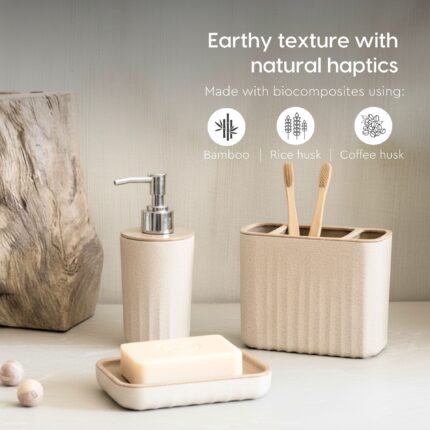Honoring the Raman Effect: Why National Science Day Matters

Honoring the Raman Effect: Why National Science Day Matters
Science Day is a perfect opportunity to reflect on the groundbreaking discoveries that continue to shape our daily lives, from the gadgets we use to the sustainable products we choose.
Have you ever wondered why National Science Day is so special? Or why it matters, especially in today’s fast-paced world? It’s not just a day to talk about science in a classroom or read through textbooks—it’s a celebration of scientific breakthroughs that shape the world we live in. And if you’re familiar with Indian scientists, you’ve probably heard of the Raman Effect, a discovery that changed the way we view light and matter. But how does this relate to your life, or even to the products you buy? Well, let’s dive into it and see how science, sustainability, and everyday items can come together in a meaningful way.
What is the Raman Effect, and Why Should You Care?
So, what exactly is the Raman Effect, and why does it deserve a spot on our calendars every year? Named after Indian physicist C.V. Raman, this phenomenon describes how light scatters when it passes through a medium. Simply put, it helped scientists understand the interaction between light and molecules, opening doors for innovations in fields like chemistry, physics, and even medicine. Pretty cool, right?
But here’s the catch—while the Raman Effect might seem like a technical subject, it has everyday applications. It’s not just a term for textbooks or exams; it’s behind technologies used in industries ranging from medical diagnostics to telecommunications. And when you look around your home, office, or even think about gifting ideas, there’s a way to link Indian scientists and the Raman Effect to products that make a difference.
National Science Day and Sustainability: More Connected Than You Think
Now, let’s circle back to National Science Day. Every year on February 28th, we honor the achievements of scientists, like C.V. Raman, whose work paved the way for countless advancements. And while this day commemorates historical scientific milestones, it’s also a great reminder to reflect on how science impacts our choices today—especially in the context of sustainability.
Did you know that many of the products we use daily—like tableware, planters, and storage solutions—are becoming more sustainable thanks to scientific innovations? As we continue to tackle global challenges like climate change and resource depletion, the focus is on using biomaterials, recycling, and embracing a circular economy. The Raman Effect is just one example of how science has a lasting impact, influencing everything from technology to eco-friendly solutions.
Here’s how it all ties together:
- Circular economy: The principle of reusing, upcycling, and reducing waste, which is vital for the planet. By buying products made with sustainable materials, like those crafted from recycled plastic or biodegradable materials, we contribute to a greener future.
- Green economy: The shift towards a more environmentally responsible market, where science and innovation work hand in hand to reduce carbon footprints. For instance, planters made from recycled ceramics or eco-friendly pots not only look beautiful but also promote sustainable living.
- Fair trade: Supporting artisans and manufacturers that prioritize fair wages, ethical practices, and environmentally-conscious production methods. When you purchase home décor or gifts, consider how your choice supports positive change.
The Impact of Indian Scientists on Sustainability and Innovation
C.V. Raman was more than just a brilliant scientist; he was a trailblazer who demonstrated the power of innovation. Though his b focused on light scattering, the idea of pushing boundaries to create something impactful rings true across industries today. For example, modern tableware made from eco-conscious materials often integrates science to enhance its durability, functionality, and environmental impact.
Think of it this way: when scientists like Raman made groundbreaking discoveries, they weren’t just doing it for recognition. They were shaping the tools, materials, and ideas that would change everyday life. Today, this spirit lives on in sustainable products designed for your home, office, or as thoughtful gifts. From mugs that keep your beverages hot for longer to storage solutions that help minimize waste, these products embody the intersection of science and sustainability.
Everyday Products and the Raman Effect: An Unexpected Connection
Okay, let’s take a step back. You might be wondering, “How does all this relate to the mugs on my kitchen counter or the planters in my living room?” Fair question! Well, think about it: modern materials and innovations in product design are often the result of scientific breakthroughs. And guess what? The Raman Effect plays a role in shaping many of the materials used in these items.
- Mugs and cups: The use of advanced ceramics, thanks to scientific research, has allowed for better heat retention and durability. The same scientific principles that drive innovations in light and material science influence how we design everything from mugs to kitchen tools.
- Planters and pots: Scientists are finding ways to create sustainable materials for planters that are eco-friendly and help in growing plants more efficiently. Some of these materials are even designed using insights gained from various scientific discoveries.
- Tableware and Storage: The growing trend of using biodegradable, upcycled, and recycled materials is directly tied to research and innovations in the world of materials science. By embracing these products, you’re not only making a sustainable choice but also supporting the green economy.
How You Can Celebrate Science in Your Life
National Science Day isn’t just a day to learn about science; it’s a reminder that science is embedded in our daily lives. From the cup of coffee you drink in the morning to the plant in your living room, science is working in the background to make these products better, more efficient, and more sustainable.
So, how can you incorporate a little more science into your life while keeping it fresh and green?
- Buy eco-friendly products: Choose items made from sustainable materials, like biodegradable tableware or recycled storage solutions. You’re not just helping reduce waste—you’re supporting the green economy.
- Gift with purpose: Give gifts that reflect your values, such as planters made from upcycled materials or mugs crafted by artisans in fair trade communities. These choices speak volumes about the world you want to help create.
- Go for long-lasting designs: Durable, timeless designs reduce waste and encourage responsible consumption. Invest in products that are made to last—whether it’s planters, mugs, or tableware.
Wrapping Up: Honoring the Raman Effect in Your Own Way
By celebrating National Science Day and reflecting on the impact of the Raman Effect, we’re reminded that science isn’t just for the lab—it’s woven into the fabric of our everyday lives. Whether you’re sipping tea from an eco-friendly cup, decorating your home with sustainable planters, or storing your items in a way that minimizes waste, science is making it all possible. So, let’s keep the spirit of innovation alive, support products that are kind to the planet, and honor the contributions of Indian scientists who made it all happen.
In the end, National Science Day is more than a date on the calendar. It’s an opportunity to reflect on how science shapes the world around us and how we can make smarter, more sustainable choices every day.










































